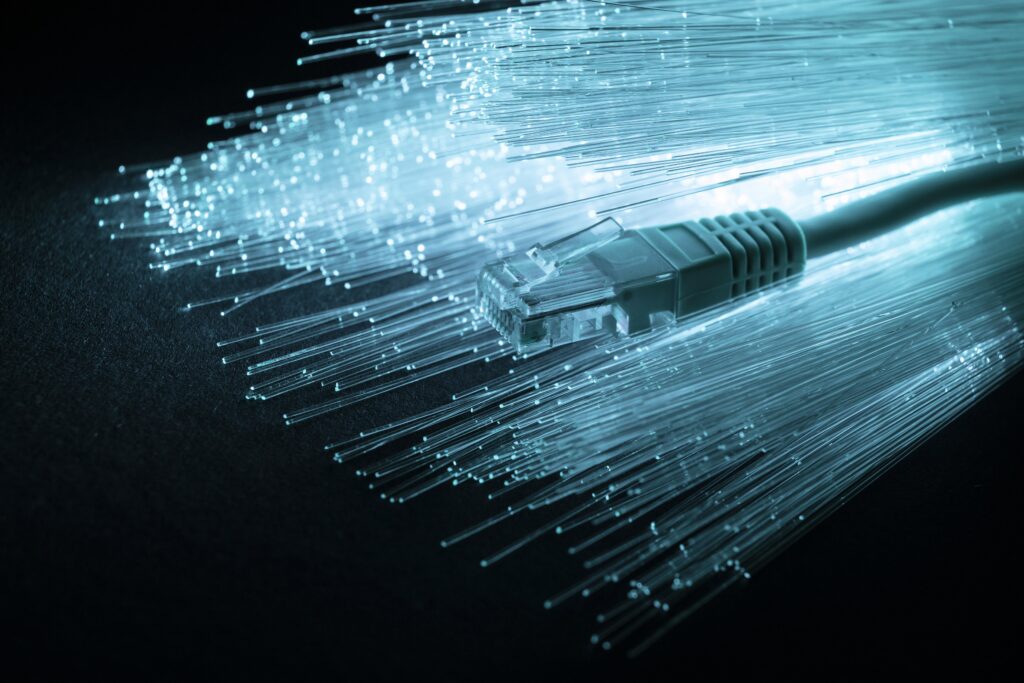In the realm of fiber optic technology, the concept of bend radius is a critical factor that significantly influences performance and reliability. Understanding what fiber optic bend radius is and why it matters can help in designing, installing, and maintaining efficient fiber optic networks.

What Is Fiber Optic Bend Radius?
The bend radius of a fiber optic cable refers to the minimum curvature a cable can undergo without causing significant signal loss or damage. Essentially, it’s the tightest bend you can make with the cable before it starts to experience adverse effects. This is crucial because fiber optic cables transmit data through light signals, and excessive bending can interfere with this process. Bend radius is typically specified in two ways: static bend radius and dynamic bend radius. Static bend radius applies to a fiber optic cable that is installed and will not move, whereas dynamic bend radius applies to a cable that will be frequently bent or moved during its operational life.
Why Fiber Optic Bend Radius Matters
Understanding and adhering to the specified bend radius is essential for several reasons.
Signal Integrity
When a fiber optic cable is bent beyond its recommended bend radius, it can cause signal attenuation. The term “signal attenuation” describes how much the signal weakens as it passes through the cable. This can result in data errors, reduced performance, and even complete loss of signal. Maintaining the appropriate bend radius ensures that the light signals can travel through the fiber with minimal interference, preserving the integrity of the transmitted data.
Physical Damage
Bending a fiber optic cable too tightly can cause physical damage to the fibers inside. These fibers are made of glass or plastic and are designed to be flexible to a certain extent. Exceeding the bend radius can lead to cracks or breaks in the fibers, which can result in permanent damage and the need for costly repairs or replacements. Ensuring that fiber optic cables are not bent beyond their specified radius contributes to the long-term reliability of the network. Over time, repeated stress on the cables from improper bending can lead to cumulative damage, resulting in more frequent maintenance issues and reduced lifespan of the infrastructure.
Long-Term Reliability
Ensuring that fiber optic cables are not bent beyond their specified radius contributes to the long-term reliability of the network. Over time, repeated stress on the cables from improper bending can lead to cumulative damage, resulting in more frequent maintenance issues and reduced lifespan of the infrastructure.
Installation and Maintenance
Adhering to the recommended bend radius is also important during the installation and maintenance phases. Installers need to be mindful of the bend radius to ensure that the cables are laid out properly, avoiding tight bends that could compromise performance. During maintenance, understanding the bend radius helps technicians handle the cables correctly, preventing unintentional damage.
Factors Affecting Bend Radius
Several factors can influence the bend radius of a fiber optic cable.
Cable Design
The construction of the fiber optic cable itself plays a significant role in determining its bend radius. Cables designed for higher flexibility, such as those with a tight-buffered design, typically have a smaller bend radius compared to loose-tube designs.
Type of Fiber
Single-mode and multi-mode fibers have different bend radius specifications. Single-mode fibers, which are used for long-distance communication, generally have a smaller bend radius compared to multi-mode fibers used for shorter distances.
Environmental Conditions
The environment in which the fiber optic cable is installed can also impact the bend radius. For instance, cables installed in outdoor or harsh environments may require a larger bend radius to account for potential movement or temperature variations.
Best Practices for Managing Bend Radius
To ensure optimal performance and longevity of fiber optic cables, it is important to follow best practices for managing bend radius.
Use Appropriate Hardware
Utilize fiber optic cable management hardware, such as bend radius control modules and fiber trays, to guide the cables and prevent excessive bending.
Follow Manufacturer Specifications
Always refer to and follow the bend radius specifications provided by the cable manufacturer. These guidelines are based on rigorous testing and are critical for maintaining signal integrity and cable health.
Train Installation Personnel
Ensure that installation and maintenance personnel are well-trained on the importance of bend radius and the correct handling of fiber optic cables. Proper training can prevent many of the issues associated with improper bending.
Regular Inspections
Conduct regular inspections of the fiber optic network to identify and rectify any instances where cables may be bent beyond their recommended radius. Proactive maintenance can prevent long-term damage and performance issues. Read More: Why Base 16 fiber optic cabling is the future of network infrastructure
Conclusion
Fiber optic bend radius is a fundamental concept that plays a vital role in the performance and reliability of fiber optic networks. By understanding what bend radius is and why it matters, network designers, installers, and maintenance personnel can ensure that their fiber optic infrastructure operates at peak efficiency. Adhering to best practices for managing bend radius not only preserves signal integrity and prevents physical damage but also extends the lifespan of the network, ensuring robust and reliable communication in today’s data-driven world. For more information or assistance with your fiber optic network, please contact us. Our team of experts is here to help you optimize your network infrastructure.